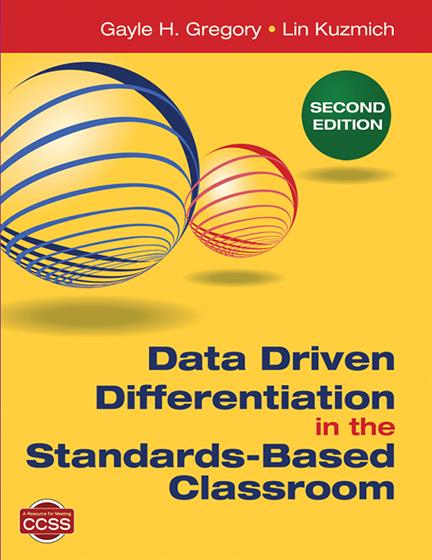Preface
Acknowledgments
About the Authors
Introduction: Differentiating With Data for Student Growth and Achievement
What Is Our Target?
Challenges and Shifts Presented by the Common Core State Standards
Why Differentiate?
Theaters of the Mind: Learning Systems and the Brain
Learning Systems and Student Growth
Connecting Data to Learning
Using Classroom Data to Plan Differentiated Instructional Strategies
Targeting Growth for All Students
1. Collecting Data to Create a Positive Classroom Climate
Positive Classroom Connections
Assessing the Learning Environment
Using Feedback
Ritual, Respect, and Cultural History
Differentiating Classroom Climate
Differentiating Celebration and Praise
Summary
2. Collecting Data to Know the Learner
Going With the Flow
Learning Profiles
Different Learning Preferences
Different Intelligences
Student Contracting for Reflective Learning
Gender Differences
Cultural Differences
Pop Culture Differences
21st Century Learners and Technology
Reflections
3. Collecting and Using Assessment Data for Diagnostic Teaching
Diagnostic Teaching
Pre-Assessment
Formative Assessment
Final Assessment
Assessing Our Assessments
Summary
4. Curriculum Approaches for Data Driven Instruction
Curriculum Mapping and Data Driven Instruction
Standards-Based Unit Planning: Sample Math Unit on Data Analysis and Probability, "The Survey Says . . . ," Grades 3 to 5
Critical Questions for Unit Planning
Pre-Assessing the Learning Gap for Unit Planning
Chunking the Learning
Summary
Other Sample Unit Plans
The Weather Reporter, Grades K to 2
Do You Know Your Rights? Grades 5 to 8
Argumentation Writing--Convince Me! Grades 9 to 12
5. Adjustable Assignments for Differentiated Learning
Options for Differentiated Learning
Adjustable Learning Grids
Adjustable Learning Elements
Flexible Grouping
Differentiating Pairs
Differentiating Small Groups
Summary
6. Instructional Strategies That Increase Student Learning
The Art and Science of Teaching
Memory Processes and the Cognitive Learning System
Differentiating Instructional Strategies
Cooperative Group Learning
Nonlinguistic Representations
Summarizing and Note Taking
Homework and Practice
Recognizing Similarities and Differences/Using Metaphors and Analogies
Summary
7. Data Driven Lesson Planning for Differentiated Learning
Using Data for Lesson Planning
Essential Elements for Data Driven Lesson Planning
Chunking the Learning for Sample Unit Plans
Summary
Conclusion: Putting It All Together for Student Growth and Achievement
How Do We Do All This Without Running From the Room Screaming?
What Can We Learn From the Errors and Successes of the Best Teachers?
What Are the Major Changes With Common Core State Standards?
Why Is It Always About the Student?
References
Index



